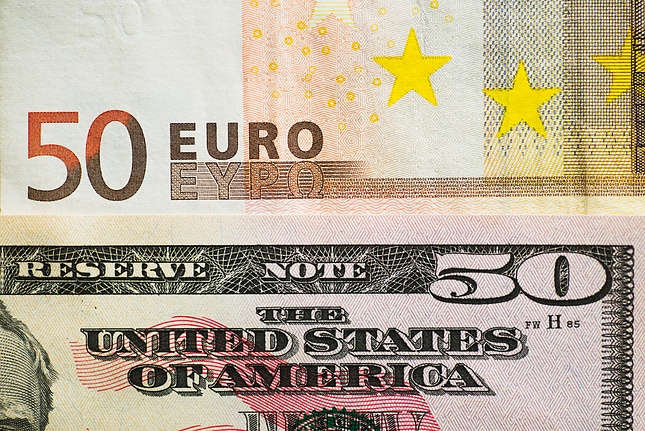Several CEE countries will see important data releases. We will begin with Poland, as this week will be release-heavy, with retail, industry, producer prices and wage growth at the beginning of the week as well as the 3Q24 GDP structure and flash estimate of November’s inflation at the end of the week. Inflation in November should be about 4.7% y/y, mostly thanks to a slight base effect. Further, Croatia and Serbia have a busy week ahead as well. In Croatia, the GDP release for 3Q24 will be published, including the structure. We expect solid growth dynamics and Croatia to outperform other countries in the region. The flash estimate of November’s inflation should show a slight increase in the headline number to 2.5% y/y. On top of that, industrial output and retail sales for October will be published and we see both sectors expanding in October. In Serbia, retail and industry sectors should expand in October as well. Slovenia will release flash inflation, which we expect to be around 1% y/y. In Czechia, the GDP structure will be published. In Slovakia, producer prices are due this week. Finally, in Hungary and Romania, there are no major macro releases, but important events are coming. Hungary will be revised by Moody’s on Friday after the market closes. However, we do not expect any change from this rating agency. Romania has entered the series of weekends during which Romanians will cast their votes in presidential and parliamentary elections. The first round of presidential elections took place this weekend.
FX market developments
The Hungarian central bank kept the policy rate unchanged at 6.5% and we adjusted our interest rate forecast to stability of rates until the end of the year. Geopolitical tensions and market volatility guarantee the pause. The timing of the next rate cut is unknown and the EURHUF development justifies caution. The EURHUF moved above 410 over the course of the last week in response to developments between Russia and Ukraine. Other CEE currencies have also weakened against the euro. It is also worth mentioning developments regarding monetary policy in Poland and Czechia. In Czechia, December’s meeting should bring no change in the policy rate. Currently, the market expects the next rate cut in February, but we see considerable risks that it may only happen in May due to increased inflationary risks in Czechia. In Poland, more and more comments indicate that the discussion about monetary easing will begin during the first quarter of 2025. Finally, in Romania, the currency remains stable and relatively strong (development supported by the central bank) but we sustain our forecast for depreciation over the course of next year.
Bond market developments
In Croatia, the Ministry of Finance placed EUR 1.2bn with local investors in a 12-month tenor, thus meeting the issuance target and rollover needs (EUR 1.13bn). Croatia has moved a step closer to wrapping up the 2024 issuance target. Croatia also published a financing plan for 2025 that assumes total issuance of bonds at EUR 6bn (EUR 4.8bn maturing, thus net issuance targeted at EUR 1.2bn) and total issuance of bills at EUR 3.7bn. All in all, total gross issuance is expected at EUR 9.7bn next year. Further, Romania has experienced a sell-off on the bond market, as the 10Y yields moved above 7% and drifted toward 7.1%. In other CEE countries, we have seen long-term yields declining over the course of the week – most notably in Hungary.
This document is intended as an additional information source, aimed towards our customers. It is based on the best resources available to the authors at press time. The information and data sources utilised are deemed reliable, however, Erste Bank Sparkassen (CR) and affiliates do not take any responsibility for accuracy nor completeness of the information contained herein. This document is neither an offer nor an invitation to buy or sell any securities.
Recommended Content
Editors’ Picks

EUR/USD holds above 1.0450 German sentiment data
EUR/USD stays in positive territory above 1.0450 after retracing a portion of its bullish opening gap. The data from Germany showed that the IFO - Current Assessment Index declined to 84.3 in November from 85.7, while the Expectations Index edged lower to 87.2 from 87.3.

GBP/USD pulls back toward 1.2550 as US Dollar sell-off pauses
GBP/USD is falling back toward 1.2550 in the European session on Monday after opening with a bullish gap at the start of a new week. A pause in the US Dollar decline alongside the US Treasury bond yields weighs down on the pair. Speeches from BoE policymakers are eyed.

Gold price manages to hold above $2,650 amid sliding US bond yields
Gold price maintains its heavily offered tone through the early European session on Monday, albeit manages to hold above the $2,650 level and defend the 100-period Simple Moving Average (SMA) on the 4-hour chart. Scott Bessent's nomination as US Treasury Secretary clears a major point of uncertainty for markets.

Bitcoin consolidates after a new all-time high of $99,500
Bitcoin remains strong above $97,700 after reaching a record high of $99,588. At the same time, Ethereum edges closer to breaking its weekly resistance, signaling potential gains. Ripple holds steady at a critical support level, hinting at continued upward momentum.

Eurozone PMI sounds the alarm about growth once more
The composite PMI dropped from 50 to 48.1, once more stressing growth concerns for the eurozone. Hard data has actually come in better than expected recently – so ahead of the December meeting, the ECB has to figure out whether this is the PMI crying wolf or whether it should take this signal seriously. We think it’s the latter.

Best Forex Brokers with Low Spreads
VERIFIED Low spreads are crucial for reducing trading costs. Explore top Forex brokers offering competitive spreads and high leverage. Compare options for EUR/USD, GBP/USD, USD/JPY, and Gold.